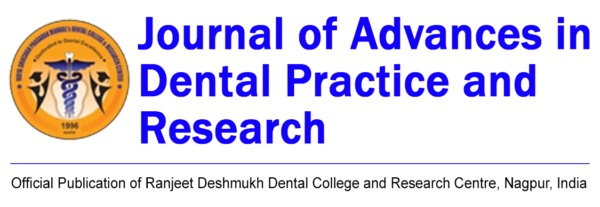Translate this page into:
Effect of artificial intelligence on scientific manuscript writing
*Corresponding author: Saee Deshpande, Department of Prosthodontics, VSPM Dental College and Research Center, Nagpur, Maharashtra, India. saeedeshmukh@vspmdcrc.edu.in
-
Received: ,
Accepted: ,
How to cite this article: Deshpande S. Effect of artificial intelligence on scientific manuscript writing. J Adv Dental Pract Res 2023;2:1.
Artificial intelligence (AI) has pervaded all spheres of our lives and scientific writing is no exception.
Predictive text software is already in use by most of us while writing emails, etc. the next step was the recent addition of Chat Generative Pre-trained Transformer (GPT), an AI chatbot developed by Open AI. It enables users to refine and direct a conversation toward an anticipated amount, format, style, level of detail, and language used. The central idea behind GPT is pre-training, a technique used in deep learning. It is very useful for a wide range of tasks, from making software to creating business ideas to various forms of creative writing.
As for every technological breakthrough, use of AI in manuscript writing also has two sides of the coin. Positive aspects are that authors can easily modify their text in the manuscript in short time with reasonable accuracy. The flip side is that AI can have restricted vocabulary and lacks the human touch or author’s distinct perspective toward scientific research.
While writing a research paper, the author must review all recent developments and trends and compare the information, filter it, and then draw meaningful conclusions. The use of AI in scientific writing should be done judiciously as it cannot be held responsible for decisions or recommendations put forward.
We should embrace the technology rather than running away from it. However, the sophistication of language versus originality of scientific thought is the choice that needs to be made by us as responsible members of the scientific community. Ultimately, the human machine collaboration is the way forward wherein instead of completely relying on AI, we can correct their mistakes as experts in the field and make sure that the writing is done quickly but without compromising on accuracy.
As said very aptly man behind the machine is more important than the machine itself.!!
Dr. Saee Deshpande Deshmukh





